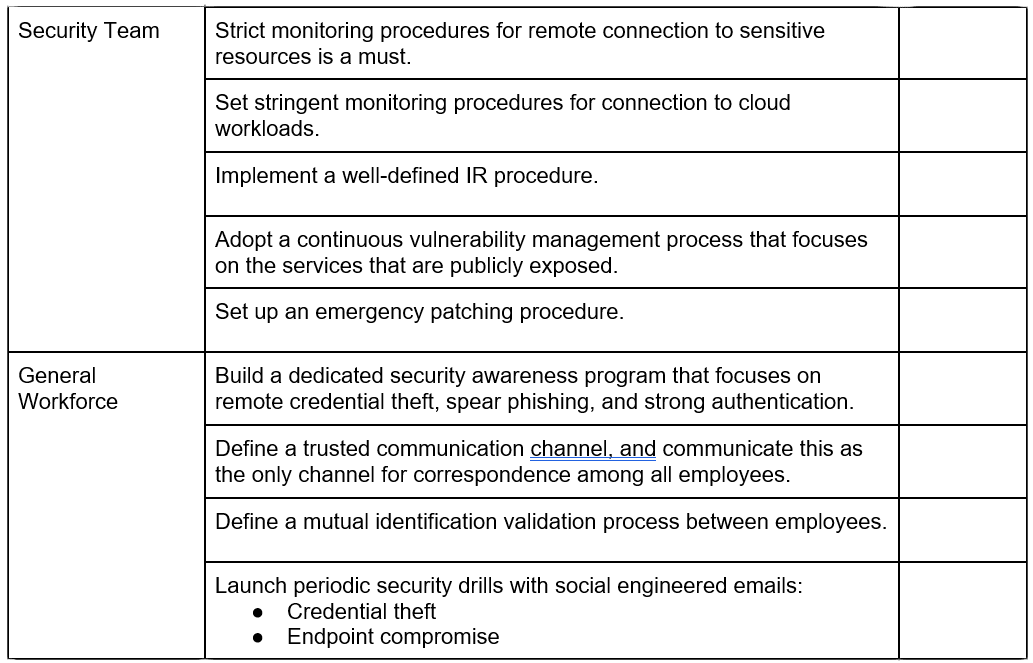
Click here to learn more about Anas Baig.
The global crisis has forced employees from all over the world to work from home. Since employees are now confined to conference calls, shared documents, and chat applications, this can trigger a rise in cyberattacks as everyone is vulnerable to an attack online. Employees need to adopt cybersecurity protocols when performing tasks online to keep their data safe and secure from any breach.
This article will talk about the security measures that employees need to take to keep their data safe from cyberattacks, as well as other essential aspects of working from home
Security Should Be Your Top Priority — Here’s Why
Organizations all over the world are adopting remote work, and their employees will need more than just tools and policies to protect them from cyberattacks. Employees will need a combination of transparency, tools, and timeliness.
Since more people are working remotely, more people have remote access to data, information, and your network. This will increase the frequency of phishing attempts, including targeted spear-phishing aimed at high profile credentials. Train your employees to be diligent in protecting themselves against these attempts.
Watch out for urgent requests that go against company policy, use emotive language, or have slightly wrong details. Also, guide employees on where to report these suspicious messages.
Employees should also be taught to establish clear communication policies to help recognize official messages. For example, try leaning towards video rather than email communication as emails can be easily spoofed and used in a phishing attack.
Transparency is essential, and employee trust is built on transparency. Providing your employees with clear and necessary information, such as how to protect their devices, will help your employees stay ahead of any cyberattack.
Ultimate CISO Checklist for Secure Remote Working
To help organizations better understand the security protocols they need to take at both a management and employee level, we have created a checklist that is devised based on the complete protection of your organization’s data.



Tips for CISOs on Productive Remote Work
Once you have your security in check, consider the following tips on how to make remote work much more productive and collaborative.
1. Stay Organized
Most IT tasks can quickly be done remotely as long as they don’t involve hands-on interactions with the organization’s physical assets. Joe Wilson, the owner of Volare Systems, says, “Design and planning meetings are still best done in person, but even these meetings can be done adequately from home with screen sharing and online whiteboard tools.” Any organization that possesses strong norms and operating procedures can quickly assemble a capable remote IT team or transition into one.
2. Select a Strong Leader
A team leader should not be chosen based on their technical expertise, but this should be someone who possesses a high level of social intelligence and strong collaboration skills.
3. Create Functional Strategies
A remote team that is well-constructed should be able to handle almost any task. Success is measured by finding out which types of work need to be done with high collaboration and synchronously and which tasks can be divided up and done independently. In other words, the key to success is creating proper strategies for the tasks that need to be completed.
4. Implement Tight Coordination
When putting together a remote team, you can minimize disruption by creating a hierarchical structure that resembles the one on-site. These remote teams should then be presented with a clear set of goals that all members of the team can understand and support.
Anita Williams Woolley, Associate Professor of Organizational Behavior and Theory at Carnegie Mellon University’s Tepper School of Business explains, “Remote teams need to coordinate their attention, determine what they’re jointly working on, what they’re dividing up and doing separately, and how to draw together when necessary to address unexpected issues.
Key Takeaways
The global pandemic has restricted organizations on a massive scale, and employees, as well as management, are trying to find ways to create robust remote work strategies to avoid any lagging behind of organizational goals. This is made much more difficult with the lack of collaboration and increased security threats that accompany remote work.
This environment is one that organizations have never seen before, so, naturally, there will always be loopholes in the system. Still, as time passes, organizations are bound to be more efficient and productive in their remote teams.
